Learn expert tips and tricks for successfully growing and caring for the stunning Ficus shivereana (shivereana fig). This comprehensive guide covers everything from potting, lighting, watering, temperature, fertilizing, pruning, pest control, repotting, and propagation. Master this unique tropical houseplant with ease.
If you’re on the hunt for a striking, unique houseplant that’s sure to impress, look no further than the Ficus shivereana. Also known as the shivereana fig or Thai fig tree, this tropical beauty boasts gorgeous green leaves with striking white venation, giving it a mesmerizing, almost otherworldly appearance.
While the Ficus shivereana may seem like a exotic and demanding plant, the good news is that with the right care, it can thrive just as well indoors as it does in its native Thai rainforests. In this comprehensive guide, we’ll cover everything you need to know to successfully grow and care for your shivereana fig like a pro.
Understanding the Ficus Shivereana

Before we dive into the care specifics, let’s first get acquainted with this fascinating plant. The Ficus shivereana is a species of fig tree that’s native to the tropical rainforests of Thailand. It’s part of the Moraceae (mulberry) family and is closely related to other popular ficus varieties like the fiddle-leaf fig (Ficus lyrata) and rubber plant (Ficus elastica).
One of the most striking features of the Ficus shivereana is its large, leathery leaves. These thick, oblong leaves can grow up to 12 inches long and 6 inches wide, with a deep green coloration and prominent white veins running throughout. It’s these dramatic veins that give the plant its unique, eye-catching appearance.
In its natural habitat, the shivereana fig can grow to impressive heights of up to 30 feet tall. However, when kept as a houseplant, it typically remains much more compact, making it a great choice for indoor spaces.
Potting and Soil Requirements
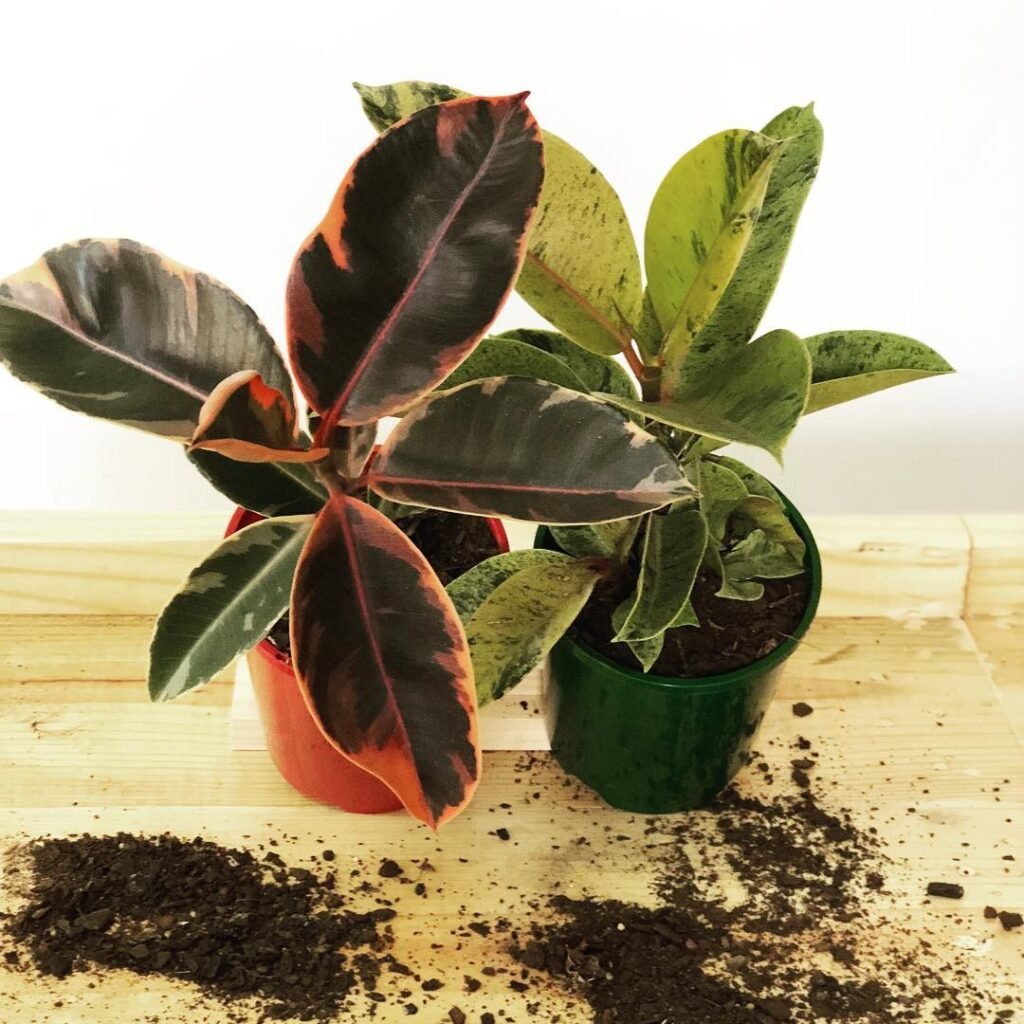
Like many ficus varieties, the Ficus shivereana prefers a well-draining, nutrient-rich potting mix. A good quality potting soil formulated for tropical plants or a mix of equal parts peat moss, perlite, and pine bark can work well.
When potting your shivereana fig, choose a container with ample drainage holes to prevent waterlogged soil, which can lead to root rot. Terracotta or clay pots are ideal as they allow for better air circulation and moisture evaporation.
It’s also important to consider pot size. While ficus plants generally prefer to be somewhat pot-bound, you’ll want to choose a pot that’s only slightly larger than the current rootball to avoid excessive soil moisture.
Lighting Needs
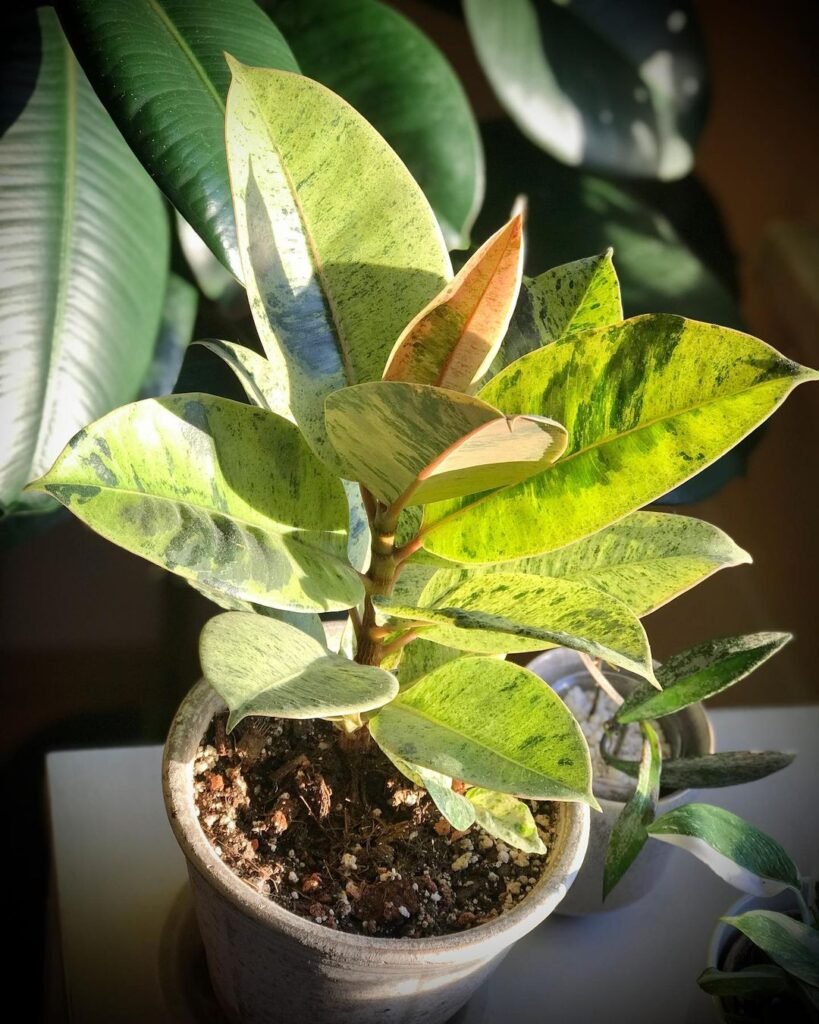
Like many tropical plants, the Ficus shivereana thrives in bright, indirect light. In their natural rainforest environment, these trees receive dappled sunlight filtered through the canopy above.
When grown indoors, aim to place your shivereana fig near an east or west-facing window where it will receive several hours of bright, indirect light each day. Avoid direct sunlight, as this can scorch the delicate leaves.
If you don’t have access to suitable natural light, you can supplement with grow lights or LED bulbs designed for indoor plants.
Watering Techniques

Proper watering is key to keeping your Ficus shivereana happy and healthy. These plants prefer consistently moist (but not waterlogged) soil, so it’s important to strike the right balance.
During the growing season (spring and summer), aim to water your shivereana fig when the top inch or two of soil feels dry to the touch. Water slowly and deeply, allowing the excess moisture to drain out through the bottom of the pot.
In the winter months, when growth slows down, you can reduce watering slightly, but don’t allow the soil to dry out completely.
One helpful watering tip: Let your tap water sit out overnight before using it to water your plant. This allows any chlorine or other chemicals to dissipate, which can be harmful to your ficus.
Additionally, avoid letting your shivereana fig sit in standing water, as this can lead to root rot and other issues.
Temperature and Humidity
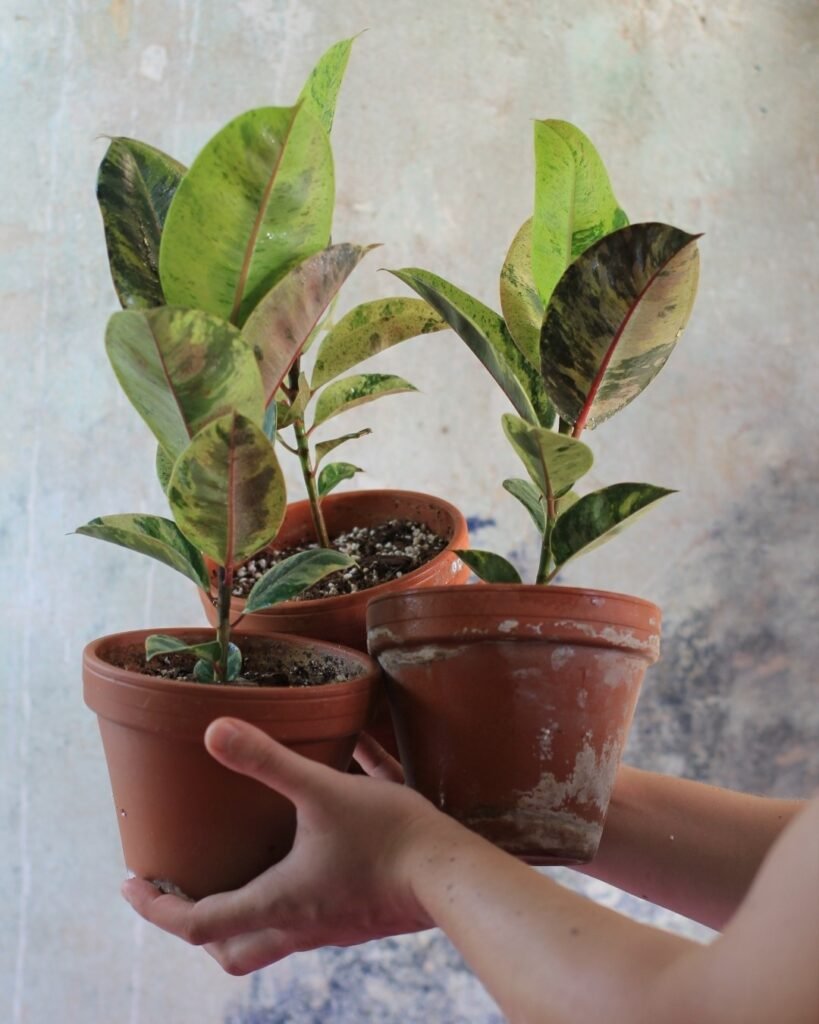
As a tropical plant, the Ficus shivereana thrives in warm, humid conditions. Ideally, aim to keep your plant in temperatures ranging from 65°F to 85°F (18°C to 29°C).
When it comes to humidity, these figs prefer levels around 50% or higher. If the air in your home is particularly dry, you may need to supplement the humidity levels, especially during the winter months when heating systems can zap moisture from the air.
Some effective ways to increase humidity for your shivereana fig include:
- Using a pebble tray or humidifier near the plant
- Grouping plants together to create a micro-humid environment
- Misting the leaves regularly with a spray bottle of water
Fertilizing for Lush Growth

To encourage lush, vibrant growth, it’s important to fertilize your Ficus shivereana regularly. Look for a balanced, water-soluble fertilizer formulated for houseplants or tropical plants.
During the growing season (spring and summer), feed your shivereana fig every two to four weeks, following the instructions on the fertilizer packaging. In the winter months, you can reduce fertilizing to once every six to eight weeks.
Avoid over-fertilizing, as this can lead to salt buildup in the soil and potential root burn.
Pruning and Maintenance
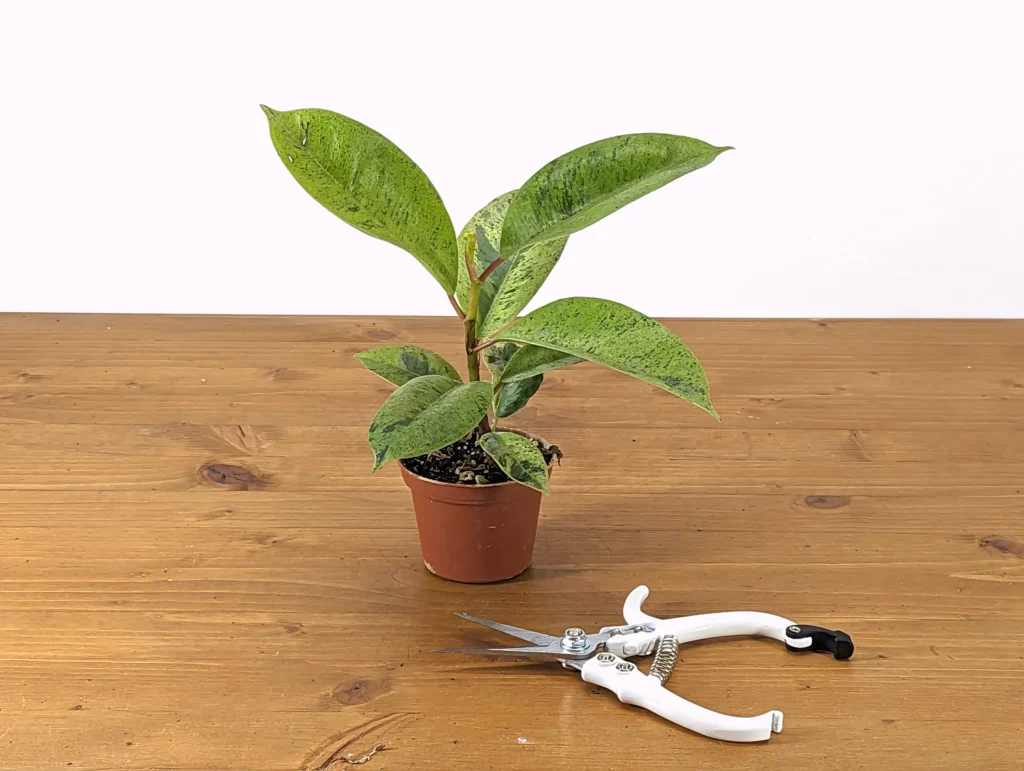
While the Ficus shivereana doesn’t require extensive pruning, it can benefit from occasional trimming to maintain its shape and encourage bushier growth.
Use clean, sharp pruners or scissors to trim away any leggy or overgrown stems, making your cuts just above a leaf node (the point where leaves emerge from the stem). You can also pinch off new growth to promote branching and a fuller, bushier plant.
It’s also a good idea to periodically wipe down the large leaves with a damp cloth to remove any dust or debris that can clog the pores and impact photosynthesis.
Pest and Disease Control
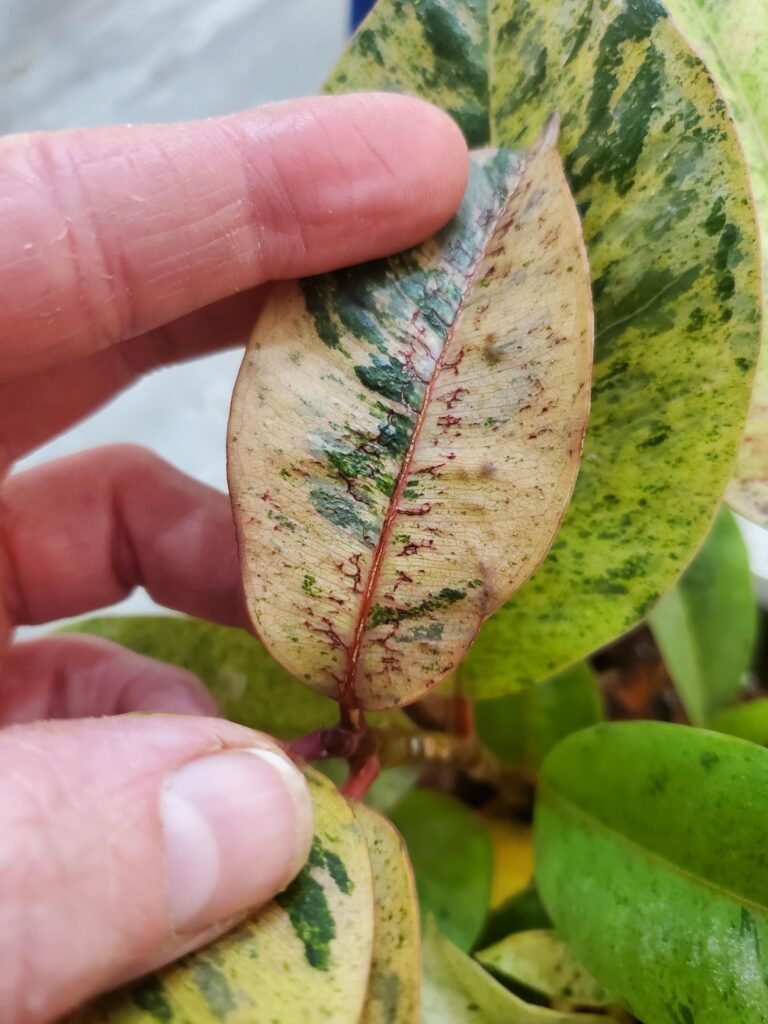
Like many houseplants, the Ficus shivereana can be susceptible to common pests and diseases if its care needs aren’t met. Some issues to watch out for include:
- Spider mites: These tiny pests can cause yellowing, stippling, and webbing on the leaves. Combat them with insecticidal soap or neem oil.
- Mealybugs and scale: These sap-sucking insects can infest the stems and undersides of leaves. Use a cotton swab dipped in rubbing alcohol to remove them.
- Root rot: Caused by overwatering or poor drainage, root rot can lead to wilting, yellowing, and eventual plant death. Adjust your watering schedule and ensure proper drainage.
- Leaf drop: Sudden temperature changes, low humidity, or inconsistent watering can cause the shivereana fig to drop its leaves. Maintain consistent care to prevent this.
Catching issues early and addressing them promptly is key to keeping your plant healthy and thriving.
Repotting and Propagation
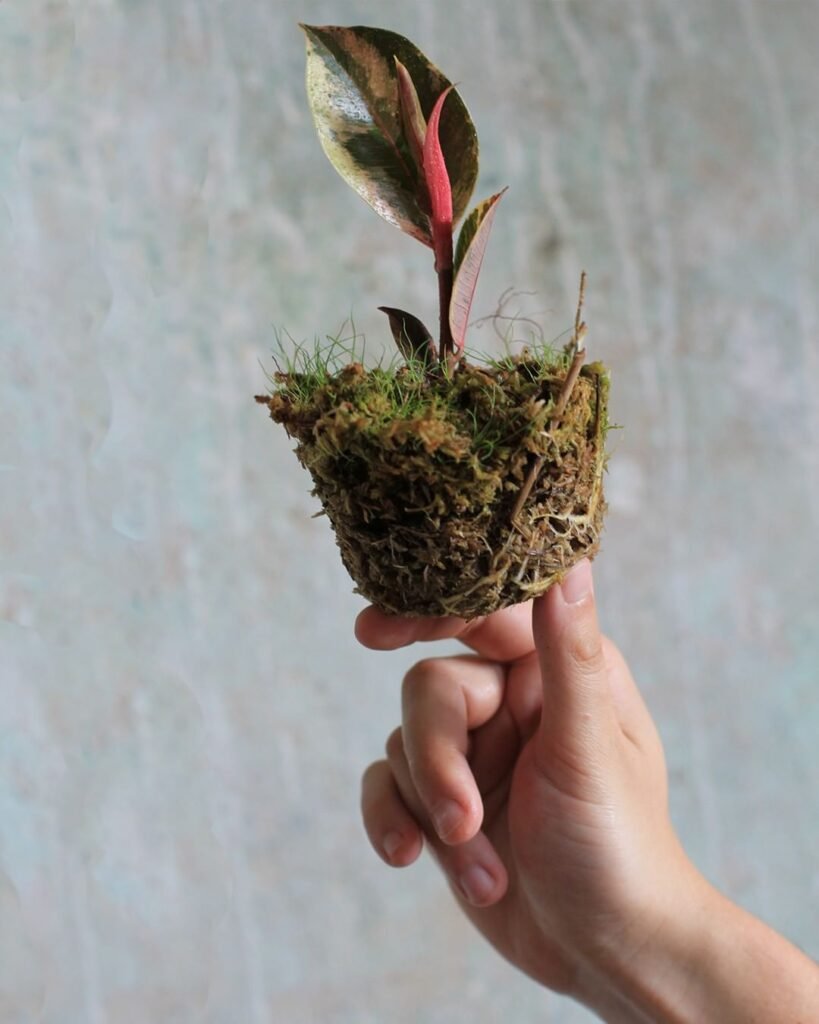
As your Ficus shivereana grows, it will eventually outgrow its current pot and require repotting. Generally, you’ll want to repot your plant every two to three years, or when you notice the roots becoming pot-bound.
When repotting, choose a new pot that’s only one or two inches wider than the previous container. Gently remove the plant from its current pot, loosen the rootball, and replant in fresh, well-draining potting mix.
If you’d like to propagate your Ficus shivereana, the easiest method is through stem cuttings. Simply take a 4-6 inch cutting from a healthy stem, remove the lower leaves, and plant the cutting in a well-draining potting mix. Keep the soil moist and provide bright, indirect light, and you should see new growth emerging in several weeks.
You can also try air layering, which involves wounding the stem, applying rooting hormone, and encasing the area in moist sphagnum moss until roots form. Once the new roots have developed, you can separate the new plantlet from the mother plant.
Where to Find Ficus Shivereana

Thanks to its unique and striking appearance, the Ficus shivereana is becoming an increasingly popular houseplant choice. However, it can still be somewhat tricky to find compared to more common varieties.
Your best bets for sourcing a shivereana fig include:
- Local nurseries or garden centers (especially those specializing in tropical/exotic plants)
- Online plant retailers (like Logee’s Plants, Steve’s Leaves, or Hirt’s Gardens)
- Private growers or enthusiasts (check Facebook groups or online forums)
When purchasing your plant, look for a healthy, compact specimen with lush green leaves and prominent white veining. Inspect the plant thoroughly for any signs of pests, disease, or damage before bringing it home.
With the right care and attention, your Ficus shivereana is sure to be a stunning, conversation-starting addition to your indoor plant collection.
Ficus Shivereana Care Summary

To wrap things up, here’s a quick summary of the key care tips for your Ficus shivereana (shivereana fig):
- Potting: Use a well-draining, nutrient-rich potting mix formulated for tropical plants.
- Light: Provide bright, indirect light. Avoid direct sunlight.
- Water: Keep the soil consistently moist but not waterlogged. Allow the top inch or two to dry between waterings.
- Temperature: Aim for 65°F to 85°F (18°C to 29°C).
- Humidity: Maintain humidity levels around 50% or higher.
- Fertilizer: Use a balanced, water-soluble fertilizer every 2-4 weeks during the growing season.
- Pruning: Trim to maintain shape and encourage bushier growth as needed.
- Pests and Diseases: Watch for spider mites, mealybugs, scale, root rot, and leaf drop.
- Repotting: Repot every 2-3 years or when the plant becomes pot-bound.
- Propagation: Propagate through stem cuttings or air layering.
With its dramatic foliage and relatively low-maintenance care needs, the Ficus shivereana is a gorgeous and rewarding plant to add to your collection. By following these simple guidelines, you’ll be well on your way to growing a lush, healthy specimen that’s sure to turn heads.
Pingback: How to Grow and Care for Ficus Shivereana | Gar...